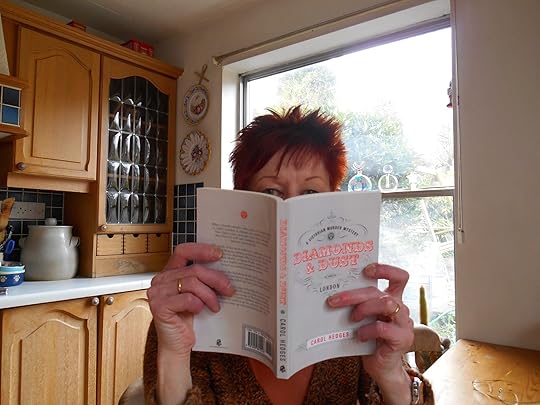The Borrowers: Plot Pinching for Beginners

As a writer of historical fiction, it is terribly incumbent upon me to be historically accurate at all times and in all details. Failure to do so means that my book will get picked on by some critic who is, say, an expert on the colour of paving stones in Camden High Street in 1860 - yes, I'm sure such a person is alive and well and badly needs to get out more.
Said person will then go and post a one star review on Amazon or Goodreads saying how my failure to get this right has spoiled their entire enjoyment of the book, and they are now in therapy and having to receive counselling to get over it. You think I jest?
There are various sources of information available to the historical writer.. and I have blogged about them before, so am not going to repeat myself here. Suffice it to say that any writer who relies on Wikipedia as their main research tool needs to be placed in a dark padded room and have cold week-old custard poured over them until they learn the error of their ways.
What interests me, as I carry on the task of researching amputations, pawn shops and workhouses for the sequel to Diamonds & Dust, is the way I start seeing how contemporary writers of the time have ''borrowed'' other writers' material for their own novels.
For instance, in the second paragraph of Diamonds&Dust, I wrote: ''The devil slips a diamond ring on his taloned finger..and steps out to take the air''. The phrase was 'borrowed' and slightly adapted from an essay on London at night by Charles Dickens .... but Dickens himself ''borrowed'' it from fellow writer George Sala, and it was used again by Wilkie Collins, a contemporary of both men. See how it works?
And boy, did it work for Dickens! I have just bought an amazing book, now labelled Victorian CSI - presumably to attract potential readers, though anyone apart from strange, OCD writers like me would not really be interested. It is a facsimile of an 1844 manual called Principles of Forensic Medicine, by William Guy, David Ferrier and William R.Smith.
It is a fascinating read, aimed at the medical officers who attended crime scenes or were called as witnesses in law courts. It was updated as new procedures, cases and drugs came to public attention, and I am sure Conan Doyle, with his medical background, read and used it copiously. Sherlock Holmes is the ultimate detective/forensic expert.
I promise to regale you with some of the enlightening information on poisons, putrefaction and post-mortem appearances on a need-to-know basis. However, what first struck me were the chapters on recognizing unusual deaths, especially the section on Death by Spontaneous Combustion. Reading it, I thought how familiar it sounded. It was as if I'd read it somewhere before. I had. A quick check of Dickens' novel Bleak House (publ.1853) turned up Mr Krook, who dies by spontaneous combustion. Apart from excluding some of the more specialist medical terminology, the description is identical to that in the manual.
So next time you, as reader, think: I'm sure I read that somewhere else, the chances are you probably did. 'Borrowing' appears to be a conscious or unconscious part of the creative process. And will one of the characters in the sequel to Diamonds&Dust die by spontaneous combustion? Gentle blog reader, you'll just have to wait and see ....
If you would like to read a sample of Diamonds&Dust, A Victorian Murder Mystery, you can do so here. US readers can do so here.
Published on March 29, 2014 00:56
No comments have been added yet.



